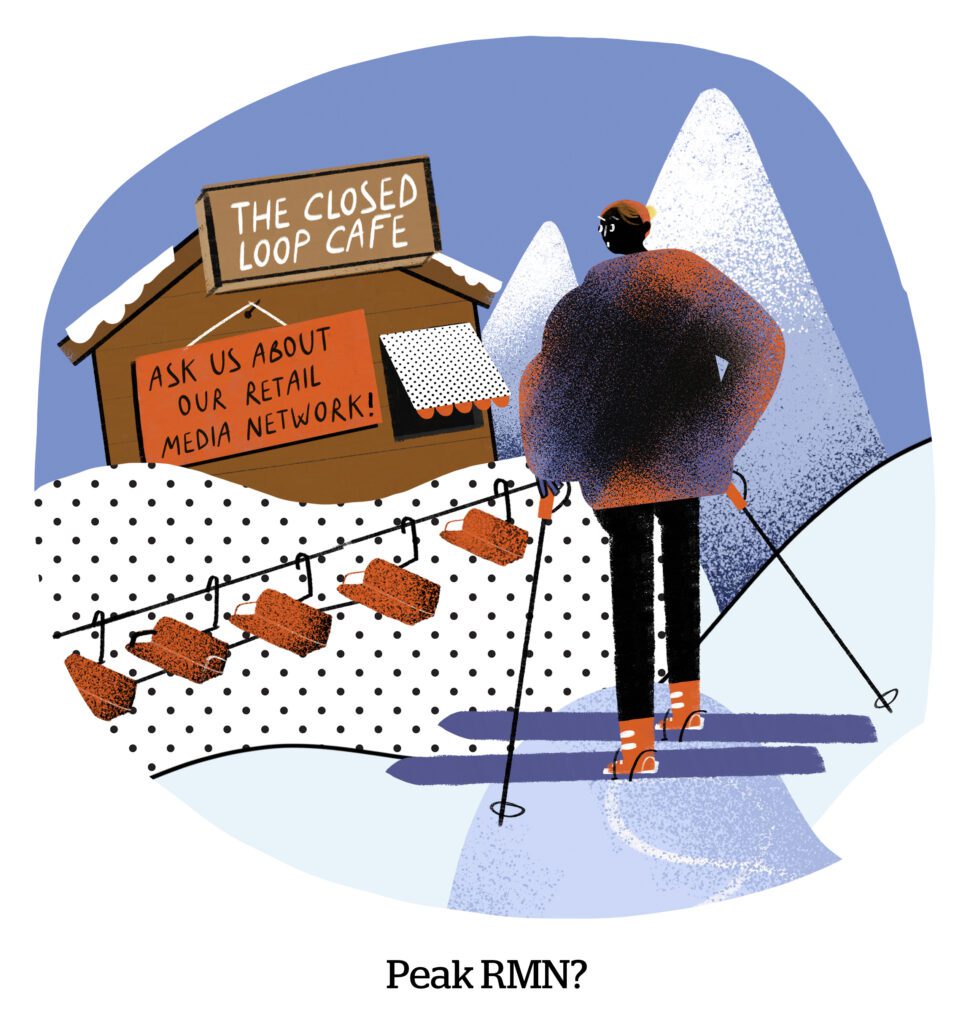Here’s today’s AdExchanger.com news round-up… Want it by email? Sign up here.
Long-Tail Retail
Walmart Connect and Target Roundel are the two retail media players with the biggest adoption outside of Amazon, according to a recent Digiday survey.
But both lag far behind Amazon’s 76% adoption rate. Twenty-four percent of those surveyed used Walmart Connect’s platform and 21% used Target Roundel. And the brick-and-mortar chains have lower online ad rates, too, since Amazon has superior conversion rates and audience data services.
Retail media itself – as in, product listing ads on retailer sites or served via proprietary audience networks – is used by 38% of marketers, according to the survey. But retail media could overtake display advertising (61% adoption) if buying trends continue.
But beyond the big kahunas, there’s also an opportunity in the retail long tail. Independently, regional grocers don’t make a dent. Even major big-box chains and ubiquitous stores like Best Buy (5%) or 7-Eleven (not listed) don’t have the scale for an ad platform flywheel to start spinning.
But together, there is great spending power in the long tail of retail networks. Digiday’s “Other” category – encompassing retailers not named Amazon, Walmart, Kroger, Best Buy and eBay – serves 25% of marketers. The consumer power in the long tail is dispersed through standalone networks right now, but the opportunity is in aggregation.
Dude, Where’s My Data?
A federal judge has declined to take a class-action lawsuit alleging that Honda, Toyota, Volkswagen and General Motors scrape drivers’ phones without their consent, The Record reports.
Why does it matter for data-driven advertising? Because cars can access the call and text logs of mobile devices connected to their onboard systems. And, apparently, they sell that data to brokerages that parcel it off to the ad ecosystem.
Berla Corporation, which provides the scraping software, doesn’t give drivers access to their data. But it reportedly does provide it to law enforcement.
The Seattle-based judge says intercepting mobile data doesn’t violate the standards outlined in the Washington Privacy Act. Plaintiffs must prove some kind of harm to meet the threshold.
There’s no rationale for why the infotainment tech in a Honda is packaging audience segments based on text messages downloaded from Bluetooth or wired-in phones (a real example from the suit). But that isn’t enough to prove harm before an American judge.
Consumers already fret about their phones spying on them. Now they’ll have to get used to their cars doing it, too.
Please Subscribe
For most news publications, the revenue situation is dire. See: WaPo bleeding subscribers and revenue, Jezebel closing its doors and Vice Media laying off more staffers in the wake of its bankruptcy.
Meanwhile, The New York Times hit 10 million subscribers and saw 16% year-over-year revenue growth during its earnings yesterday. It also upped its subscriber goal to 15 million by 2027.
Although other publishers are modeling themselves after The Times and glomming onto subscriptions as a self-preservation strategy, most news sites shouldn’t expect too much from subscriptions business, Brian Morrissey argues in his Substack, The Rebooting.
Morrissey surveyed 201 publishers last month and found that most see only small incremental gains in subscription revenue. There’s a limit to how much people will pay for news. (Hint: It’s usually less than sports, music or entertainment.) So gaining subscribers is a nonstop challenge for publishers, as is churn.
Besides, the Gray Lady’s success has less to do with the subscription trend and more to do with how it bundles news, sports (which is now through The Athletic), a cooking vertical and popular games, like Wordle, into its own subscriptions.
But Wait, There’s More!
Big Tech gets a rare policy win in Europe. [Bloomberg]
YouTube pages are getting a TikTok-like For You page. [The Verge]
IAB Tech Lab will update its OpenRTB spec in December – for the third time this year. [release]
I tried out Facebook’s ad-free tier. Here’s what it’s like. [Mashable]
Why enticing brands is the key to Roblox’s future earnings. [Digiday]
Salon gets sold to French media company Find.co for an undisclosed sum. [Fast Company]
You’re Hired!
Kumaresh Singh joins IAS as SVP, Data Science. [release]










